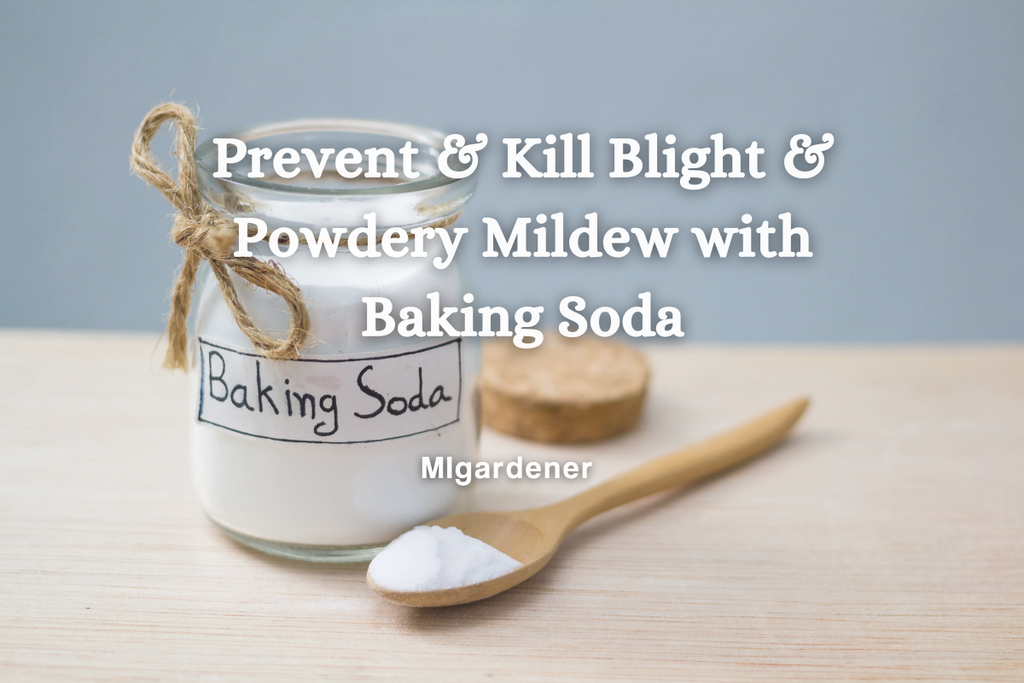
Prevent and Kill Blight & Powdery Mildew With Baking Soda
Control Tomato Blight & Powdery Mildew Organically With Baking Soda
VIDEO: EZ Baking Soda Fungicide
As Organic gardeners, we seem the get the short end of the stick when it comes to effective disease preventing tools. We seem to be the first to get blight on our tomatoes, and the first to get powdery mildew as well! This not only effects our tomato plants, but our zucchini, cucumbers, pumpkins, squash, melons, potatoes, and even beans! BUT there is one fool proof method to preventing, and even STOPPING the spread of powdery mildew, and blight. That is by using the power of baking soda.
What Does Tomato Blight Look like?

What Does Powdery Mildew Look Like?

What is Baking Soda?

Baking soda is NAHCO3 or Sodium Bicarbonate. Is it natural? The answer is YES. Sodium bicarbonate is found very commonly by hot springs, geysers, and many sulfur rich places. So this does count as an organic supplement for your garden. But the real question is,
Does it work?
YES.
How it works:
Baking Soda works by creating an alkaline environment on the leaf,
and fungus (powdery mildew and blight are both fungi) cannot colonize the surface of the leaf since they need a neutral pH (around 7.0) to survive and thrive. This spray of water and Baking soda will change the pH of the leaf from around 7.0 to around 8.0, this change is enough to kill, and prevent all blight spores!
HOW TO APPLY:
Step 1: Mix 3 tablespoons baking soda with 1 gallon of water.This is the baking soda we use: Arm and Hammer Pure Baking Soda.
Step 2: Mix in 1 tablespoon vegetable oil, or cooking oil of your choice. This helps the spray to stick to the leaves.
Step 3: Mix in 2 drops of dish soap to help emulsify (mix) everything. I recommend using a gentle dish soap since many have harmful chemicals and are not good for soil life. I get the Planet Ultra Brand and it works just a good to be honest. I used to use palmolive but switched last year once I saw all the harsh chemicals in it.
Step 4: Spray on tops and bottoms of leaves till dripping
Tip: Begin with 3 tablespoons, and apply that amount one time each week for 3 weeks. Then switch to 3 1/2 Tablespoons if fungus is still growing, or spreading.
WARNING: Start spraying in the morning or evening - Spraying in the heat of the day can harm your leaves.
Yes, so many different formulas but yours is much stronger so I will try it.
Question: how about the soil around the base of the plant? Would it be good to also treat the soil surrounding the plant as well?
At what time of the growing season do you start to apply it?
Hi there! I used this blend yesterday and my leaves are showing dark spots of damage. Could this be from the baking soda or oil reacting with sunlight?
Leave a comment